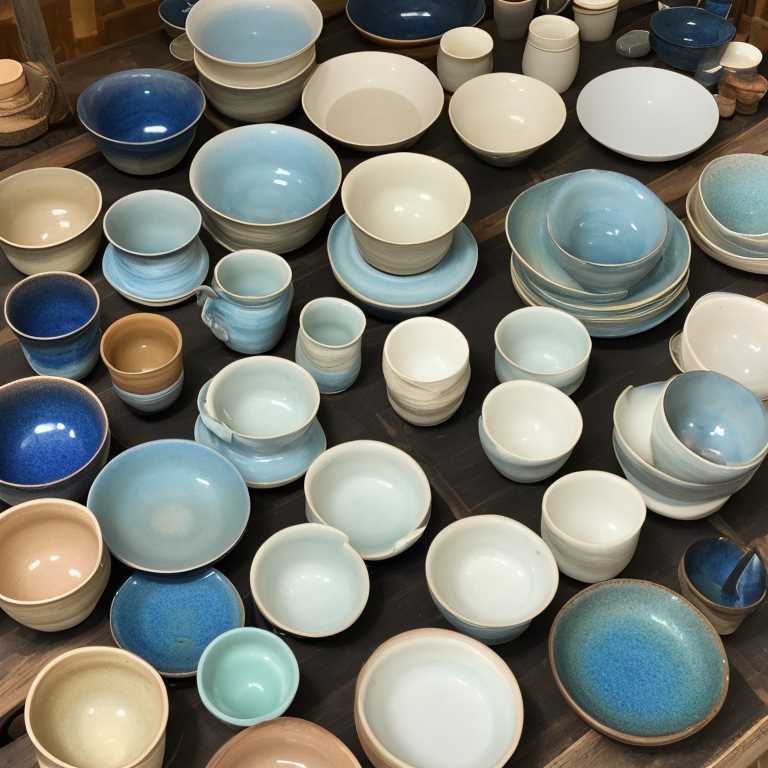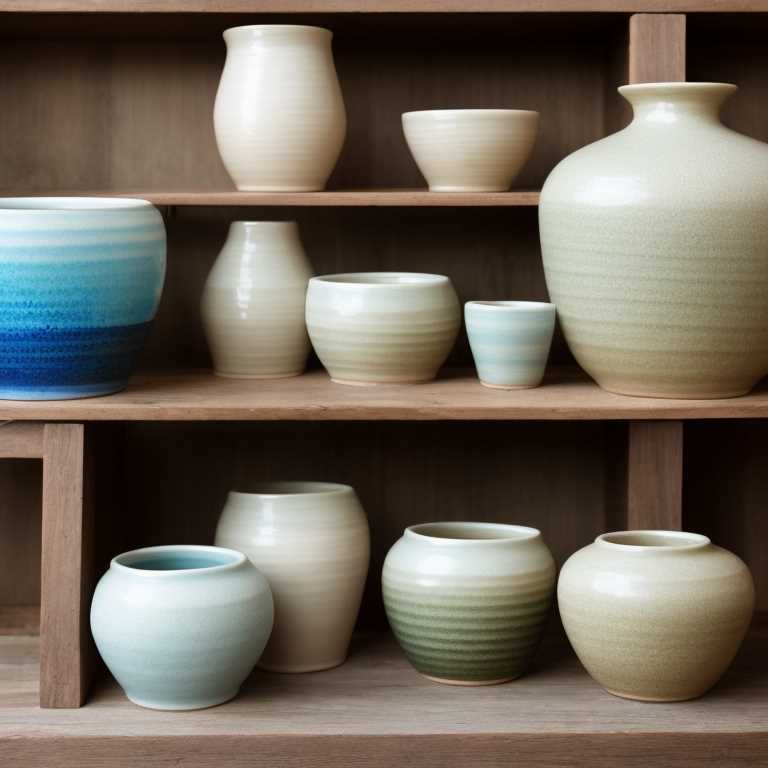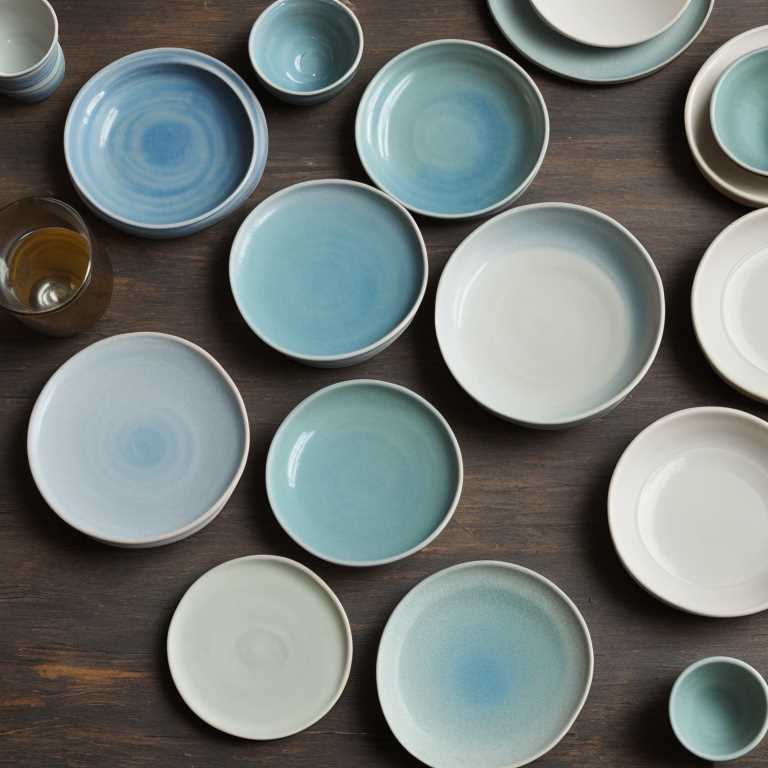Pottery glazing is the process of applying a thin layer of glass or ceramic coating to a clay object. This layer is then fired at high temperatures to create a smooth, glossy finish that enhances the beauty and durability of the pottery.
To get started with glazing pottery, you need to gather some essential tools and materials. These include a pottery wheel, clay, glaze, glaze brush, and kiln. You can purchase these items from a pottery supply store or online retailer.

Once you have all the necessary tools and materials, it's time to prepare the clay for glazing. First, you need to create a pottery piece by throwing it on a wheel or hand building it. Next, let it dry completely before applying the glaze. This step is important because if the clay is not completely dry, the glaze will not stick properly and can cause the piece to crack or warp during firing.
When the piece is dry, it's time to start applying the glaze. There are several ways to apply glaze, including brushing, dipping, spraying, and pouring. The method you choose will depend on the shape and size of your piece, as well as personal preference.

Brushing is the most common method of glaze application. To brush on glaze, dip your brush into the glaze and apply it evenly to the surface of the piece. Use long, smooth strokes to avoid leaving brush marks. Make sure to apply a thin, even layer of glaze, as thicker layers can cause the piece to warp or crack during firing.
Dipping involves submerging the entire piece into a container of glaze. This method is best for small pieces or those with simple shapes. To dip, hold the piece by its bottom and slowly lower it into the glaze. Hold it there for several seconds, then lift it out and let any excess glaze drip off before placing it on a drying rack.
Spraying is a great method for larger pieces or those with intricate details. To spray, pour the glaze into a spray gun and apply a fine mist of glaze to the surface of the piece. Make sure to wear a respirator mask to avoid inhaling any airborne particles.
Pouring is similar to dipping, but instead of submerging the piece, you pour the glaze over it. This method is best for pieces with irregular shapes or those with a lot of texture. To pour, hold the piece at an angle and slowly pour the glaze over the surface, making sure to cover all areas evenly.
After applying the glaze, it's time to fire the piece in a kiln. Firing is the process of heating the piece to a high temperature to melt the glaze and fuse it to the clay. The firing process can take several hours, depending on the size and thickness of the piece.
There are two types of firing: bisque firing and glaze firing. Bisque firing is the first firing, which hardens the clay and removes any moisture. Glaze firing is the second firing, which melts the glaze and fuses it to the clay.

It's important to follow the manufacturer's instructions when firing your piece, as the temperature and timing can vary depending on the type of clay and glaze you are using. Make sure to wear protective gear, such as gloves and goggles, when handling the hot kiln.
Once the firing is complete, let the piece cool down completely before handling it. The glaze should be smooth and glossy, enhancing the beauty and durability of the pottery. You can now enjoy your handmade piece or give it as a special gift to someone you love.
Glazing pottery is a fun and rewarding process that allows you to create beautiful, one-of-a-kind pieces that will last a lifetime. With the right tools and materials, and a little practice, you can become a skilled potter and create stunning pieces that will be treasured by generations to come.